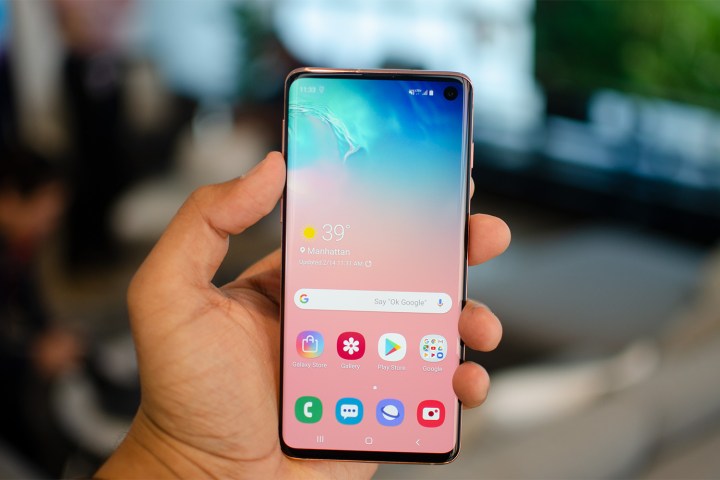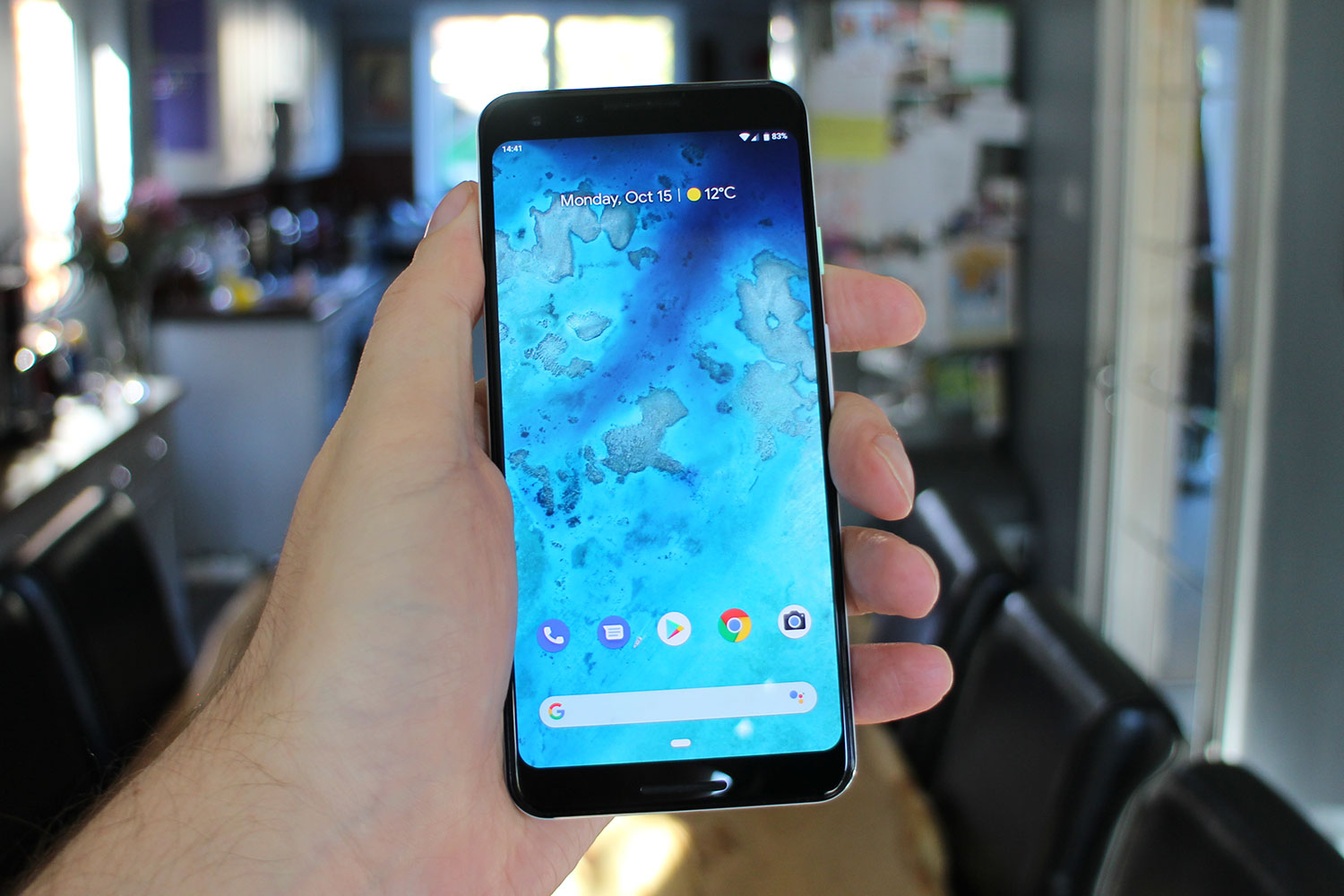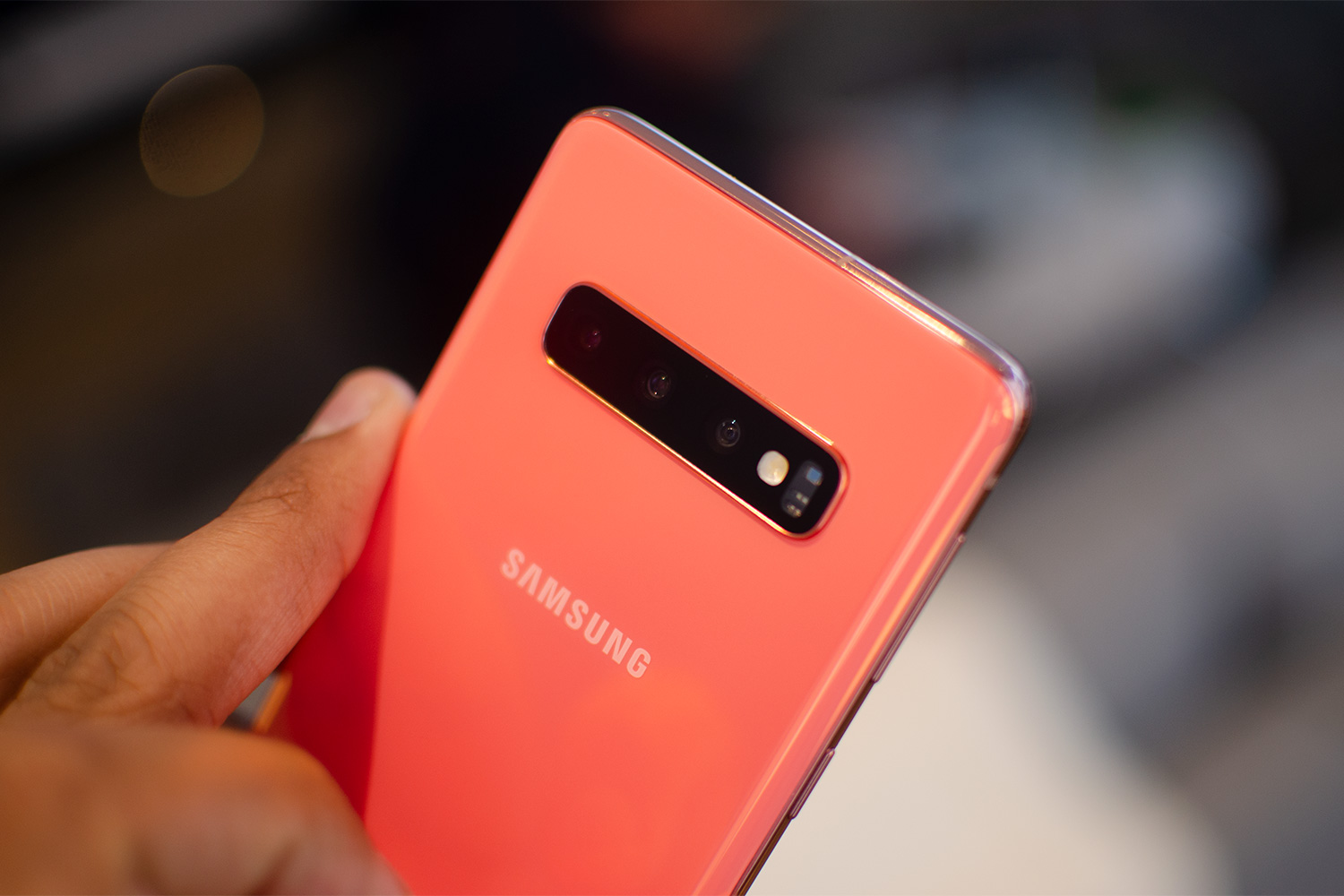
Arguably the most-awaited Android phone of the year, the Samsung Galaxy S10 is here. The phone features a new design, far-improved specs, and a beautiful large display, making it easily one of the best phones on the market, and definitely one of the most interesting.
Of course, the Galaxy S10 isn’t the only flagship
Specs
| Samsung Galaxy S10 | Google Pixel 3 | |
| Size | 149.9 x 70.4 x 7.8 mm (5.90 x 2.77 x 0.31 inches) | 145.6 x 68.2 x 7.9 mm (5.73 x 2.69 x 0.31 inches) |
| Weight | 157 grams (5.54oz) | 148 grams (5.22 ounces) |
| Screen size | 6.1-inch AMOLED | 5.5-inch AMOLED |
| Screen resolution | 3,040 x 1,440 pixels (551 pixels per inch) | 2,160 x 1,080 pixels (443 pixels per inch) |
| Operating system | Android 9.0 Pie | Android 9.0 Pie |
| Storage space | 128GB, 512GB | 64GB, 128GB |
| MicroSD card slot | Yes | No |
| Tap-to-pay services | Google Pay, Samsung Pay | Google Pay |
| Processor | Qualcomm Snapdragon 855 | Qualcomm Snapdragon 845 |
| RAM | 8GB | 4GB |
| Camera | Triple 16MP, 12MP, and 12MP rear, 10MP front | Single 12.2MP rear, dual 8MP and 8MP front camera |
| Video | 2,160p at 60 frames per second, 720p at 960 fps | 2,160p at 30fps, 1080p at 120fps, 720p at 240fps |
| Bluetooth version | Bluetooth 5.0 | Bluetooth 5.0 |
| Ports | USB-C, 3.5mm audio jack | USB-C |
| Fingerprint sensor | Yes (in-display) | Yes (back) |
| Water resistance | IP68 | IP68 |
| Battery | 3,400mAh
Fast Wireless Charging 2.0 Qi wireless charging with Wireless Power Share |
2,915mAh
Fast charging Qi wireless charging |
| App marketplace | Google Play Store | Google Play Store |
| Network support | AT&T, T-Mobile, Sprint, Verizon | AT&T, T-Mobile, Sprint, Verizon |
| Colors | Prism black, prism blue, flamingo pink, prism white, prism green | Just black, clearly white, not pink |
| Price | $900 | $800 |
| Buy from | Samsung | |
| Review score | 4 out of 5 stars | 4.5 out of 5 stars |
Performance, battery life, and charging

One of the main differences between these two phones is the hardware specs under the hood. While both of the devices are flagship-tier, the fact is that the
The battery on the Galaxy S10 sits in at 3,400mAh, which is a little larger than the 2,915mAh battery in the Google
The
Winner: Samsung Galaxy S10
Design and durability

The
The
On the back of the Google
Winner: Samsung Galaxy S10
Display

The display on the Google
The Galaxy S10 has a display that’s better in every way. It’s the winner here.
Winner: Samsung Galaxy S10
Camera

The Google Pixel series is known for offering excellent cameras, and that’s driven largely by artificial intelligence. While the Pixel only has a single-lens camera, Google has invested a ton of time and money into ensuring that it can still offer features like decent bokeh without the need for multiple sensors — and it has largely worked. The
The Galaxy S10, however, goes another route — on the back, it has three camera lenses. There’s one ultra-wide sensor with a resolution of 16 megapixels and an aperture of f/2.2, one standard lens with a resolution of 12 megapixels and a variable aperture of f/1.5 and f/2.4, and one telephoto lens with a resolution of 12 megapixels and an aperture of f/2.4. The device also supports features like
The front-facing cameras are also pretty impressive. The Google
There’s no doubt the S10 has the more versatile camera, but phones like the LG V40 have multi-camera arrays and the
Winner: Tie
Software and updates

Both the Google
Perhaps the most important thing to consider, however, is updates — and that’s where Google really shines. Because the
Winner: Google
Special features

Google has been working on a range of interesting features for the Pixel series, and they can be pretty useful. For example, the
The Samsung Galaxy S10 has a few cool features of its own. For starters, the S10 offers Samsung Dex, which allows you to use your phone as a desktop computer. The phone also has an in-display fingerprint sensor, support for Samsung Pay, and the ability to wirelessly charge any Qi-certified device. Samsung is also talking up A.I. with new camera features and Bixby options.
Winner: Tie
Price
The Google
Overall winner: Samsung Galaxy S10
There’s no surprise here — the Samsung Galaxy S10 is a newer phone with more modern specs, and as such it’s the clear winner. If you want one of the most powerful phones on the market, with an ultra high-resolution display and great cameras, then the Samsung Galaxy S10 is the phone to buy. If, however, you like a simpler software experience (and timely updates) as well as the smart features Google is known for, then the Google
Editors' Recommendations
- The best Android phones in 2024: the 14 best ones you can buy
- The best Android tablets in 2024: the 11 best ones you can buy
- There’s something Samsung didn’t tell you about the Galaxy S24
- The best Samsung Galaxy S23 screen protectors in 2023: our 10 favorites
- Asus’ latest Android phone could be a big threat to the Galaxy S23 Ultra


